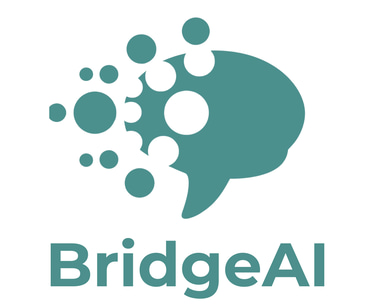The Future of ESL Education: How AI is Solving the Teacher Burnout Crisis
How artificial intelligence is transforming ESL lesson planning and rescuing teachers from the 38+ hour weekly planning grind.
Poppet Celdran
7/15/20254 min read


The Hidden Crisis in ESL Classrooms Worldwide
Emma Nguyen stares at her laptop screen at 11 PM on a Sunday night, surrounded by coffee cups and scattered lesson plan templates. As a freelance ESL teacher in Ho Chi Minh City, she's spent the entire weekend creating materials for her upcoming week of classes. This scene plays out in millions of homes across the globe every week—from São Paulo to Seoul, from Manila to Madrid.
The statistics are staggering: ESL teachers spend an average of 38+ hours per month on lesson planning alone, with 44% reporting burnout from preparation workload. Recent insights from Reddit's vibrant teacher communities reveal the true scope of this crisis, painting a picture of educators "building the plane while flying it" and searching through 15+ fragmented websites just to find suitable teaching materials.
But what if this wasn't the future of ESL education? What if technology could fundamentally transform how we approach language teaching, freeing educators to focus on what they do best—inspiring and connecting with students?
The Perfect Storm: Why ESL Teachers Are Overwhelmed
Time: The Scarcest Resource in Education
The data from teacher communities worldwide tells a consistent story. According to discussions across Reddit's r/Teachers and r/ESLTeachers forums, new educators describe lesson planning as "building the plane while flying it"—creating all materials from scratch while managing full teaching loads.
The numbers speak volumes:
First-year teachers spend 3-5 unpaid hours per week just on lesson documentation
Veteran teachers report constantly adapting resources when courses change
70% of educators say they're spending too much personal time on lesson plans
One middle-school ELA teacher captured the frustration perfectly: "I teach middle school ELA... It takes me hours each week to write plans and prep materials. I am so tired."
The Resource Desert: When Teachers Become Content Creators
Unlike other subjects with established textbook ecosystems, ESL teachers often find themselves in a resource desert. Many schools provide minimal ready-to-use materials, forcing educators to become content creators by necessity.
The current reality includes:
Hunting through 15+ different websites for quality teaching materials
Creating multiple versions of the same lesson for different proficiency levels
Spending $150-$300 out-of-pocket on pre-made curriculum bundles
Constant pressure to align content with standards while maintaining engagement
As one veteran science teacher noted in online forums: "I've never been given anything at all by my district and must find or create every resource myself."
The Differentiation Challenge: One Size Fits None
ESL classrooms present unique challenges that multiply planning complexity. Unlike content areas with standardized baselines, language teachers must account for:
Varying vocabulary knowledge levels within the same class
Different grammatical accuracy stages
Receptive versus productive skill gaps
Cultural and linguistic backgrounds that affect learning styles
A math teacher perfectly summarized this challenge: "The hardest part of lesson planning [is] scaffolding content efficiently for students who are on a spectrum of abilities."
Enter AI: The Game-Changer for ESL Education
Beyond Generic Tools: The Need for Specialized Solutions
While general AI tools like ChatGPT have gained popularity among educators, they fall short of addressing ESL-specific pedagogical needs. Generic AI lacks understanding of:
Second language acquisition principles
CEFR and ACTFL proficiency frameworks
Cultural sensitivity in language learning contexts
The delicate balance between challenge and comprehension
The future of ESL education lies in specialized AI that understands both technology and pedagogy.
The Three Pillars of AI-Powered ESL Education
1. Intelligent Content Generation
Advanced AI systems can now create contextually appropriate lesson materials in minutes, not hours. These systems understand:
Appropriate vocabulary for specific proficiency levels
Grammar scaffolding sequences
Cultural context and sensitivity
Multimedia integration for diverse learning styles
2. Adaptive Differentiation
AI-powered platforms can simultaneously generate multiple versions of the same content, automatically adjusting:
Reading complexity levels
Vocabulary difficulty
Activity types (visual, auditory, kinesthetic)
Assessment formats
3. Community-Driven Innovation
The most powerful AI platforms create ecosystems where teachers can:
Share and monetize their successful materials
Access peer-reviewed, classroom-tested resources
Collaborate across geographical boundaries
Build professional networks around shared challenges
Real-World Impact: What Teachers Are Saying
Early adopters of specialized ESL AI tools report dramatic improvements in both efficiency and job satisfaction:
Time Savings:
87% of beta users report saving 7.5+ hours per week on planning
Lesson creation time drops from hours to minutes
More time available for student interaction and feedback
Quality Improvements:
Access to professionally developed, pedagogically sound materials
Consistent alignment with learning objectives
Enhanced variety in lesson formats and activities
Professional Growth:
Reduced burnout and stress levels
Increased creativity in lesson design
Stronger focus on teaching rather than content creation
The Future is Here: Introducing the Next Generation
As we look toward the future of ESL education, platforms like BridgeAI represent the evolution from generic tools to specialized solutions. Built specifically for ESL educators, these platforms combine:
Proprietary AI agents trained on ESL pedagogy and best practices
Complete lesson planning ecosystems that handle everything from warm-ups to assessments
Teacher marketplaces where educators can share and monetize successful materials
Community features that connect teachers globally around shared challenges
With over 160 teachers already signed up during the waitlist period and 83% expressing payment intent, it's clear that the market is ready for specialized solutions.
Making the Transition: A Roadmap for ESL Educators
Phase 1: Exploration and Experimentation
Start with one specific task (vocabulary generation, quiz creation)
Test AI outputs against your current materials
Join online communities discussing AI in education
Phase 2: Strategic Integration
Develop a hybrid workflow combining AI efficiency with human expertise
Focus on time-saving without compromising quality
Build templates and processes for consistent results
Phase 3: Community Engagement
Share successful AI-generated materials with peers
Contribute to and benefit from teacher marketplaces
Participate in professional development around AI integration
The Ethical Imperative: Technology Serving Teachers
As we embrace AI in ESL education, we must ensure that technology serves teachers rather than replacing them. The goal isn't automation—it's augmentation. AI should handle the repetitive, time-consuming tasks so educators can focus on:
Building relationships with students
Providing personalized feedback and support
Adapting instruction based on real-time classroom dynamics
Inspiring and motivating language learners
Conclusion: Reclaiming Sunday Nights
The future of ESL education isn't just about better technology—it's about better lives for educators. When we free teachers from the endless cycle of content creation, we give them back their Sunday nights. We reduce burnout. We improve job satisfaction. And ultimately, we create better learning experiences for students worldwide.
The transformation is already beginning. ESL teachers across the globe are discovering that lesson planning doesn't have to consume their lives. With specialized AI tools designed for language education, the 38+ hour monthly planning burden becomes a manageable 5-minute task.
The question isn't whether AI will transform ESL education—it's whether you'll be part of shaping that transformation.
Innovate
Empowering ESL teachers with AI-driven solutions.
Connect
info@bridgeai.pro
+84 909074793
© 2025. BridgeAI by Zen Tech Asia LLC. All rights reserved.
www.bridgeai.pro
